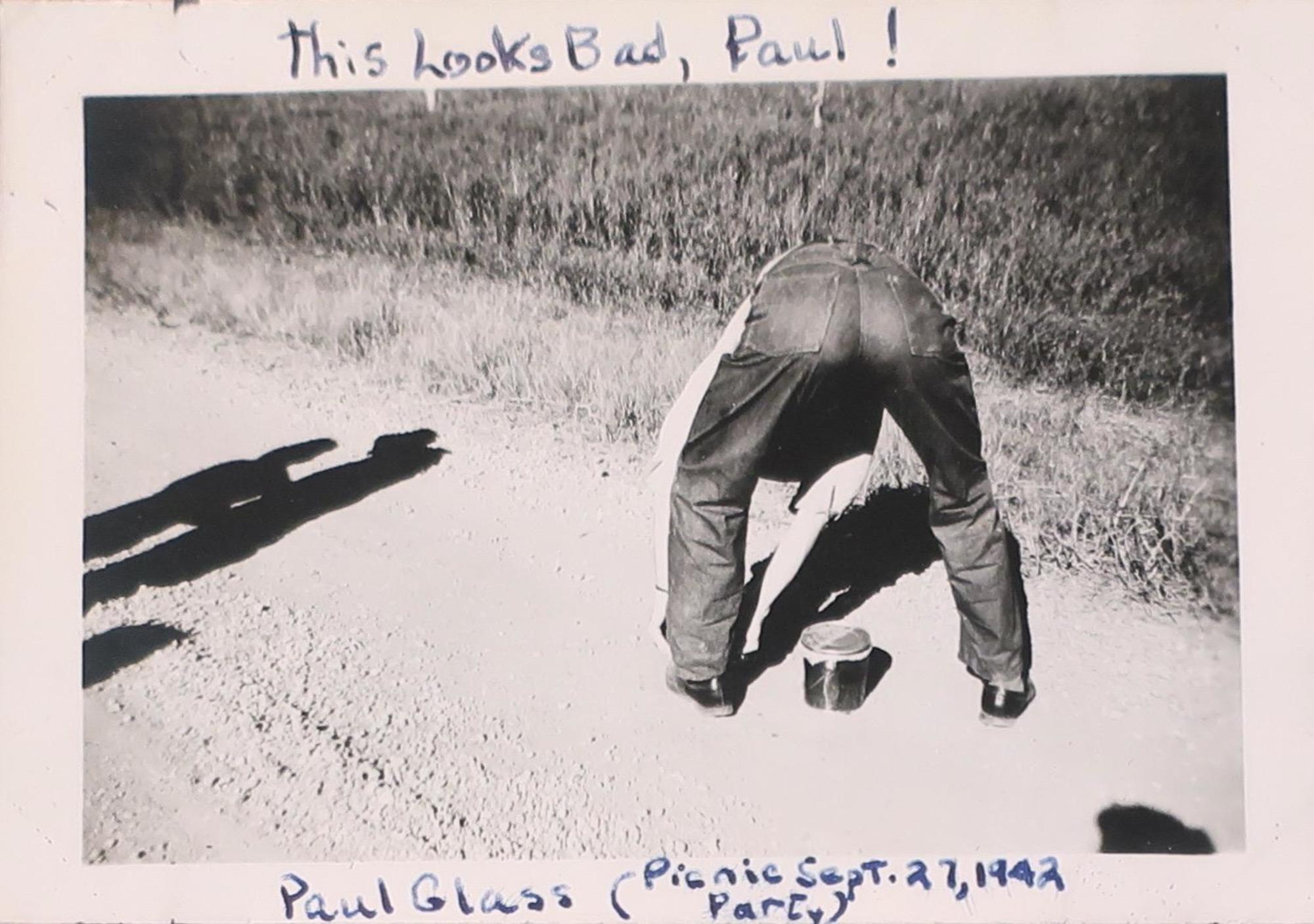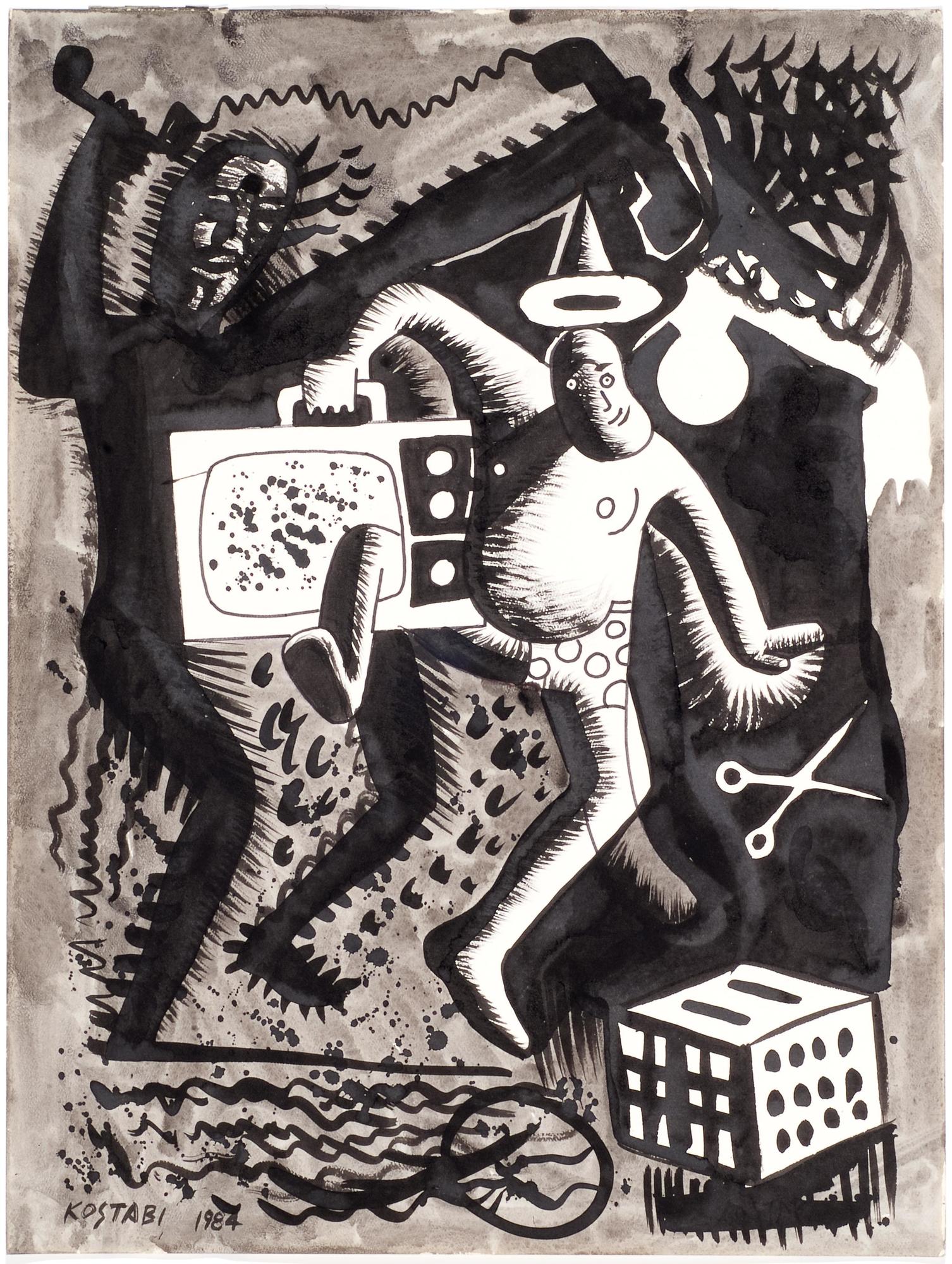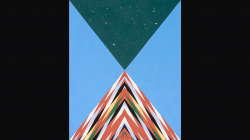When you hear “cursed images,” you might think of “culinary abominations, nail art fails, creepy costumes, and NSFW optical illusions.”
Though you can definitely find a few objects like that in our online Take Your Pick: Collecting Found Photographs exhibition, we’re using the phrase a bit loosely here. In the lead up to Halloween, we wanted to share a few images from UMMA’s collection that fit the spirit of the season.
Skeletons? Of course. Graveyards? Got a few. A Mayan God of Death hanging next to a painting made with splattered pig’s blood? Well... that’s currently on view in our historic entryway.
Ah Puch, Guillermo Meza

Guillermo Meza painted this ominous, threatening image of Ah Puch, a Mayan God of Death, in 1949. The skeleton-like being is generally pictured as a human with an owl’s head, but Meza’s depiction reflects the role the skeleton mask plays as a powerful symbol in Mexican culture while also invoking the fear and violence of the ancient world.
You can view this piece on the first floor of UMMA’s Alumni Memorial Hall in the Lizzie and Jonathan Tische Apse. (And yes, that Jordan Eagles painting it’s hanging next to is made of actual pig’s blood.)
Read more about this artist and image
Guillermo Meza, Ah Puch, 1949, oil on canvas. University of Michigan Museum of Art, Museum purchase, 1958/1.102. © 2019 Artists Rights Society (ARS), New York / SOMAAP, Mexico City
The Underworld, Ann McCoy
McCoy claims that her underworld series, of which this chaotic lithograph is a part, was inspired by a dream she had in which she visited the underworld land of a medieval cult, the Bogomils, who believed the world was actually created by the devil. As reflected in this work, McCoy dreamt of this world full of bizarre complexes and corpses.
For her, underwater worlds and the classical underworld often meld into one, thus bringing together the images of sea creatures, demons, and the galaxies.
Read more about this artist and image
Ann McCoy, The Underworld, 1980, hand colored lithograph on paper. University of Michigan Museum of Art, Gift of Professor and Mrs. Edward J. Mitchell, 1981/2.176.
Death Carrying a Child in His Arms, Stefano della Bella
This piece is the second in Della Bella’s “Five Deaths Series,” all of which are set in Paris’s Cimetière des Innocents. In each image, the “sanitized, or ‘boiled bones’” (as one curator called him) character of Death carries someone off. Della Bella saw “death’s presence as one that interrupts life’s pleasures without warning” – which is fitting, as he died before completing two of the pieces in this series.
Read more about this artist and image.
Stefano della Bella, Death Carrying a Child in His Arms, No. 2 of the Five Deaths series, ca. 1648, etching and engraving on paper. University of Michigan Museum of Art, Gift of Jean Paul Slusser, 1963/2.47
Cemetery Gates, George A. Tice

This one depicts a dramatic silhouette of the Bodie cemetery’s gates (full of tragic figures, of course) against a stormy sky. As one curator wrote, Bodie “invites reflection on the frailty of human ambition”–and what’s more cursed than that?
Read more about this artist and image.
George A. Tice, Cemetery Gates, 1965; printed 1971, gelatin silver print on paper. University of Michigan Museum of Art, Gift of the Marvin Felheim Collection, 1983/1.295.12
Untitled (Child in Graveyard), Bruce Davidson

Read more about this artist and image
Bruce Davidson, Untitled (Child in Graveyard), from “Welsh Miners”, 1981, gelatin silver print on paper. University of Michigan Museum of Art, Gift of Mr. and Mrs. Douglas M. Kenyon, 1983/2.243.9
Untitled, unrecorded American artist
 "This looks bad, Paul!" Who is Paul? What is he bending over like that? Who are the two shadowy figures on the left? What was the purpose of this picnic? We'll never know.
"This looks bad, Paul!" Who is Paul? What is he bending over like that? Who are the two shadowy figures on the left? What was the purpose of this picnic? We'll never know.
Read more about this artist and image
American, Untitled, 20th century, photograph on paper. University of Michigan Museum of Art, Gift of Peter J. Cohen, selected by Museum visitors 2019-2020, 2020/1.293
As Long as I Don't Have to Get Up Before 11:00, Mark Kostabi
 Ah yes, one of the spookiest things of all: being jolted awake from your dreams, and forced to throw off your cozy duvet and swing your feet down onto the cold ground to start another day on this wretched planet. (Can you tell that this is being written on a damp, chilly Monday morning?) Mark Kostabi gets it.
Ah yes, one of the spookiest things of all: being jolted awake from your dreams, and forced to throw off your cozy duvet and swing your feet down onto the cold ground to start another day on this wretched planet. (Can you tell that this is being written on a damp, chilly Monday morning?) Mark Kostabi gets it.
Read more about this artist and image
Mark Kostabi, As Long as I Don't Have to Get Up Before 11:00, 1984, ink on paper. University of Michigan Museum of Art, The Dorothy and Herbert Vogel Collection: Fifty Works for Fifty States, a joint initiative of the Trustees of the Dorothy and Herbert Vogel Collection and the Nation Gallery of Art, with generous support from the National Endowment for the Arts and the Institute for Museum and Library Services, 2008/2.240



